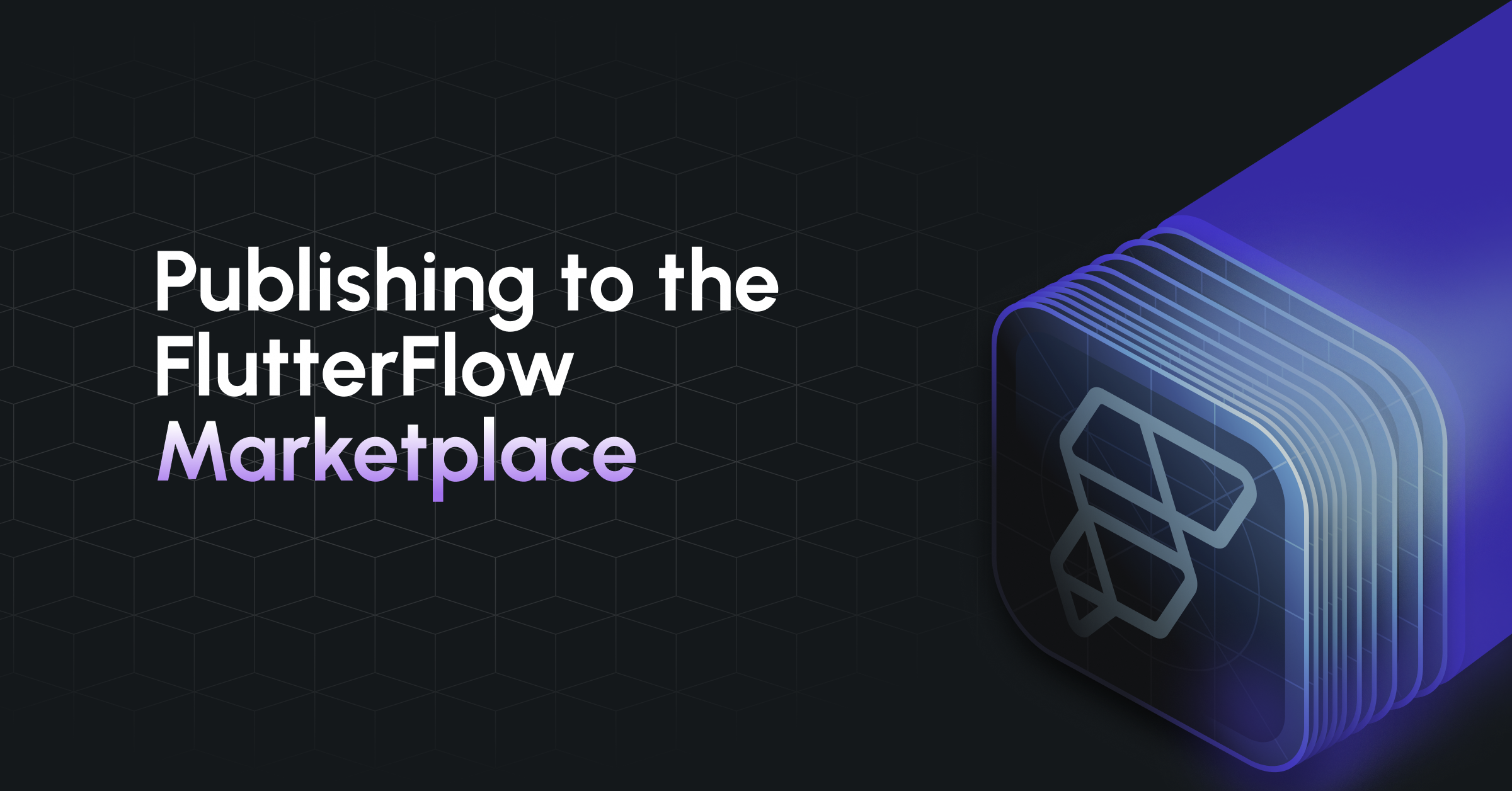FlutterFlow Marketplace accepts Libraries which are FlutterFlow projects that can be published as dependencies. When another team imports your Library, they gain access to everything you have made available inside it, including:
- Components (UI pieces like forms, cards, or nav bars)
- Custom Functions and Actions
- App State Variables and Constants
- API Calls
- Code Files such as classes or enums
- Assets
This modular approach makes Libraries powerful. Instead of just sharing a design, you can share complete functionality such as a payment flow or onboarding system that drops seamlessly into other apps.
How to Publish a Library
Publishing your work to the Marketplace follows a clear process.
1. Build Your Project
Start with a FlutterFlow project as usual. Make sure the project is complete, functional, and tested.
2. Prepare for Publishing
There are a few requirements before a project can be turned into a Library:
- It must not already have been deployed to the App Store or Play Store
- Any errors or warnings need to be fixed first
- You must be on a Pro+ plan since Libraries require branching and versioning
- You should clone your project before publishing if you want to preserve a “non-Library” version
3. Publish as a Library
Go to Settings and Integrations > App Settings > Publish as Library
- Confirm you are publishing from the main branch
- Add a version message so users know what changed
- Publish
At this point, your project is officially a Library and can be imported by others.
4. Add It to the Marketplace
Once published, you can make the Library visible in the FlutterFlow Marketplace. Here, others can discover it, import it, and reuse it in their own projects.
Best Practices for Marketplace Success
If you are aiming to create value for others or to build your reputation as a developer, a few tips can help your Library stand out:
- Document clearly: Add descriptions to your Custom Functions and Actions so other developers know what they do
- Version thoughtfully: Publish new versions with clear change notes. This makes your Library predictable and trustworthy
- Use Library Values: Expose configurable variables like default currency or theme color so your Library is flexible for different projects
- Keep dependencies clean: Align versions of shared Libraries to avoid conflicts
- Think in user journeys: Libraries that package entire flows such as checkout or onboarding are often more useful than single components
Why Publish
Publishing to the Marketplace is not only about giving back. It can have direct benefits for you and your team:
- Save time: Reuse your own Libraries across multiple projects instead of rebuilding features from scratch
- Grow visibility: Show the FlutterFlow community what you are capable of
- Build revenue: With paid Marketplace options, your best work can generate income
- Scale faster: For agencies, having a library of prebuilt flows and components means delivering more client apps in less time
Bringing It Together
The FlutterFlow Marketplace is more than a gallery of components. It is a way to capture your expertise, share it with others, and build apps faster whether you are a solo developer, a startup team, or an agency managing multiple clients.
By publishing a Library, you are not only creating something reusable for your own future projects but also contributing to a growing ecosystem of shared solutions.
The next time you finish building a flow or feature that others might need, consider turning it into a Library. Submitting to the Marketplace could be the step that transforms your one-off solution into a resource the whole community benefits from.

